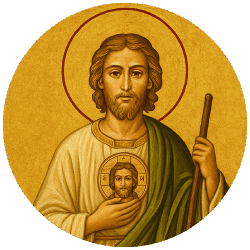What is a Sacrament?
We recognize that the Sacraments have a visible and invisible reality, a reality open to all the human senses but grasped in its God-given depths with the eyes of faith. When parents hug their children, for example, the visible reality we see is the hug. The invisible reality the hug conveys is love. We cannot “see” the love the hug expresses, though sometimes we can see its nurturing effect in the child.
The visible reality we see in the Sacraments is their outward expression, the form they take, and the way in which they are administered and received. The invisible reality we cannot “see” is God’s grace, his gracious initiative in redeeming us through the death and Resurrection of his Son. His initiative is called grace because it is the free and loving gift by which he offers people a share in his life, and shows us his favor and will for our salvation. Our response to the grace of God’s initiative is itself a grace or gift from God by which we can imitate Christ in our daily lives.
The saving words and deeds of Jesus Christ are the foundation of what he would communicate in the Sacraments through the ministers of the Church. Guided by the Holy Spirit, the Church recognizes the existence of Seven Sacraments instituted by the Lord. They are the Sacraments of Initiation (Baptism, Confirmation, the Eucharist), the Sacraments of Healing (Penance and the Anointing of the Sick), and the Sacraments at the Service of Communion (Marriage and Holy Orders). Through the Sacraments, God shares his holiness with us so that we, in turn, can make the world holier. (source: USCCB)
What is a Sacramental?
“Holy Mother Church has, moreover, instituted sacramentals. These are sacred signs which bear a resemblance to the sacraments. They signify effects, particularly of a spiritual nature, which are obtained through the intercession of the Church. By them men are disposed to receive the chief effect of the sacraments, and various occasions in life are rendered holy.” Sacramentals…always include a prayer, often accompanied by a specific sign, such as the laying on of hands, the sign of the cross, or the sprinkling of holy water (which recalls Baptism).
Sacramentals do not confer the grace of the Holy Spirit in the way that the sacraments do, but by the Church’s prayer, they prepare us to receive grace and dispose us to cooperate with it. “For well-disposed members of the faithful, the liturgy of the sacraments and sacramentals sanctifies almost every event of their lives with the divine grace which flows from the Paschal mystery of the Passion, Death, and Resurrection of Christ. From this source all sacraments and sacramentals draw their power. There is scarcely any proper use of material things which cannot be thus directed toward the sanctification of men and the praise of God.” (Source: Catechism of the Catholic Church 1667-1670)
Blessings are the most important and “first” Sacramentals. They consist of prayer, Scripture, and sometimes a special ritual sign. Other popular Sacramentals that Catholics use in their everyday spiritual lives are Holy Water, the Rosary, the Crucifix, medals, blessed candles, the brown scapular, blessed salt, statues of saints, religious art and more!
